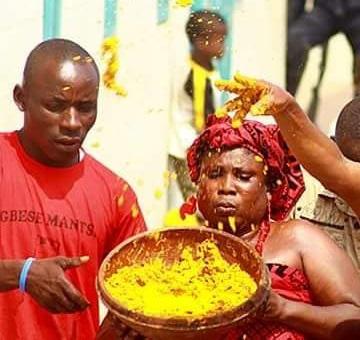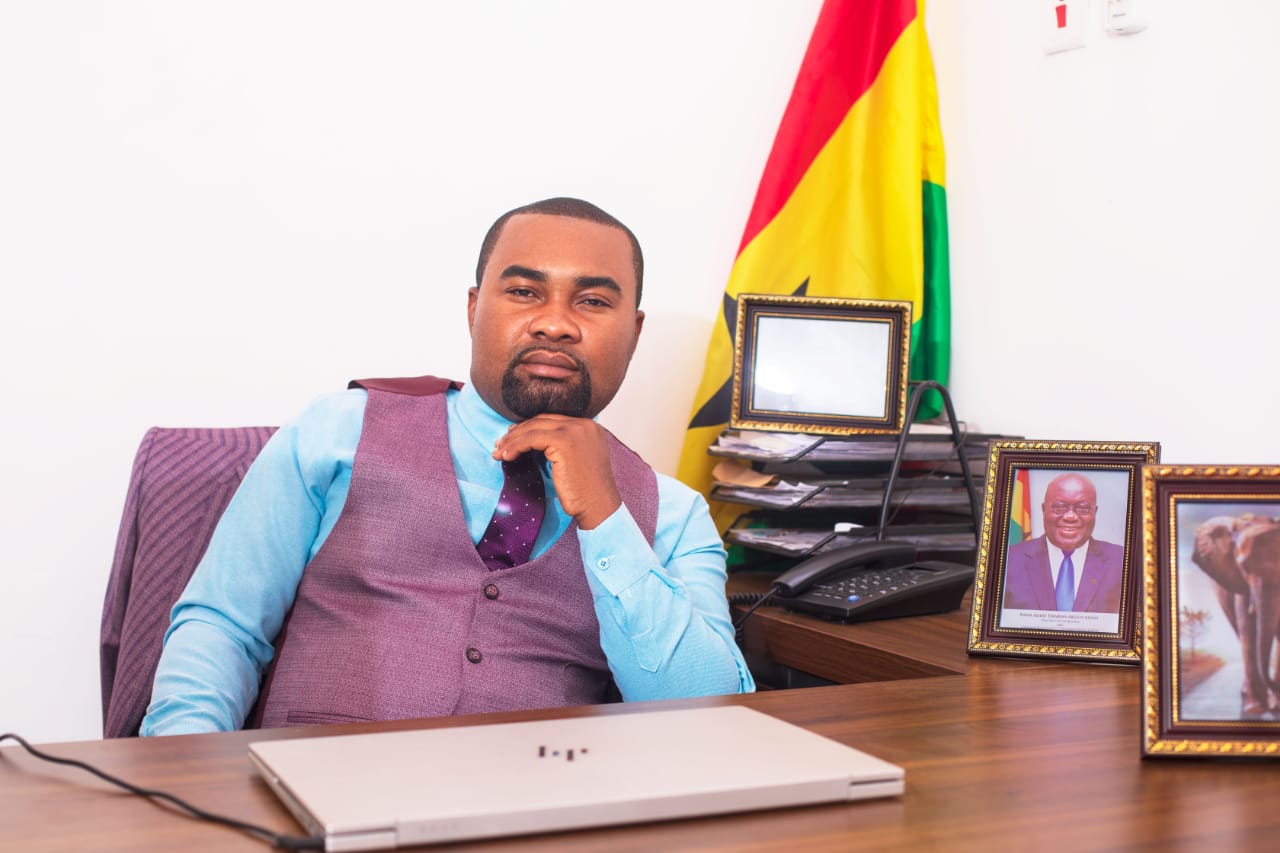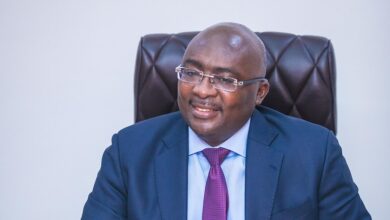Re: Rebutal To Numo Otu Akwaaba (Tsawe Wulomo), Nii Afotey Otinor And Rejoinder To Article By Boye Otu Titled “The Distortion Of Nungua History”

It appears there is an ongoing debate about the office of the Gborbu Wulomo and or the role of Borketey Lawe in Nungua.
In reaction to social media writings, the descendants of Borketey Lawe minced no words in saying that Borketey Lawer was the founder of the Nungua state; that he was the leader of the Ga Dangme group and that he was the shitse of the Ga Dangme state.
They referenced M.J Field’s “ Religion and Medicine of the Ga People” to suggest that Borketey Lawer was the first priest and ruler of the town Nungua and that that was affirmed by Thomas Laryea from Sanshie in the Crowther report.
They also referenced M.J. Field’s second book written in 1940 titled “ Social Organization of the Ga people” and sited page 122 that Odai Koto and his people were Akwamu refugees who came to seek refuge with Numo Borketey Lawe after the defeat and break up of the Akwamu Kingdom.
On the assertion by the descendants of Borketey Lawe that he was the founder of the Nungua state and leader of Ga Dangme, I wish to state that that is absolutely false. Looking at what Margaret Field said on page 122 of ‘The Social Organisation of the Ga People’ about the Sanshie people clearly shows that Borketey Lawe was not the founder of Nungua since the Sanshie were on the land before the people of Amanfa arrived.
Writing in 1940, Margaret Field observed in her book “Social Organization of the Ga People” about the Sanshie people thus:
“ The other set of people were on the land before the immigrants arrived. Exactly who they were is uncertain, but most traditions have it that they were of Akwamu origin. Probably they were Akwamu refugees who settled after the defeat and break-up of the Akwamu Kingdom. Their leader was Odai Koto, the Priest of the god Oshwe.
They were famous hunters and owned-in the hunters manner- all the land up to Dodokwe (a gulley near what is now Accra riffle range) including the present day sites of Osu, Labadi and Teshie….. the Kpeshie aborigines of Teshie and Labadi district though not actually disturbed seem to have been in subjection to Odai Koto’s people and paid them two-thirds of the salt that they won from the lagoons, but probably they received hunters bush meat in exchange for it”
What Margaret Field said at page 122 is that which is stated above and it speaks volumes for itself and answers a lot of questions as to who was the first to settle on the land and who owns the land up to Dodokwe etc.
It is only dishonest intellectuals like descendants of Lawe who will lift portions to make their point. When Field talked about the Sanshie as probable Akwamu refugees, who came in after the defeat and break-up of the Akwamu Kingdom, the dishonest Lawe descendants have picked on it to denigrate the Sanshie people. It is a well known historical fact that the Akwamu Kingdom broke up in 1730 ( see ‘The Ga People of Ghana; History and Culture of a West African People page 201 by Henderson Quartey) and therefore Akwamu refugees could only have come into Nungua after 1730. But well before 1730, the Nungua Mantse, Afotey Okle, had granted permission to a break-away group from Labadi led by the La Mankralo, Nii Okai Nmashie to settle at his fishing port which he had earlier rented to Fante fishermen. Later on Nii Nmashie purchased the land from the Nungua Mantse, Afotey Okle, for 16 bendas.
The transaction between Nii Nmashie and Mantse Afotey Okle, which took place in 1710 is captured in the book ‘The Teshie People’ written by Augustus Amartey. At page 11, he stated;
“The next day the mantse sent delegates to go and see Nungua mantse about the purchase of the beach and Nungua Mantse put the request into a wide circumference of thought, turned it over, about and after examining all sides of it carefully, he agreed to sell it to the Mantse for 16 bendas, that is over 32 oz of weight (£102.85)”
Another Teshie historian, Dr T.A Osae, in his book ‘Teshie :– A survey of the growth of the last Ga town ‘ captured the transaction between Nii Nmashie and the Nungua Mantse in this way:
“ In any case once Nii Nmashie had decided that he and his followers were going to live permanently at Teshie, he took steps to regularize their hold on the area by formerly acquiring it. Subsequently, he purchased the area from King Afotey of Nungua by offering 16 benda, the Dutch money commonly used at that time”.
From the above statements from these Teshie historians of repute, it is clear that it was the Nungua Mantse who owns the lands as he had absolute control over it to dispose of it as and when he liked and since the Sanshie people were on the land before the Akwamu kingdom broke up in 1730 it is unlikely that the Sanshie people were Akwamu refugees who came in after the break-up of that Kingdom.
The reference by Lawe descendants to M. J. Field’s “Religion and Medicine of the Ga people” written in 1937, that Borkete Lawe was the first ruler and founder of Nungua cannot be true in the light of present studies. After making that assertion in 1937, Field again wrote in 1940 that the Sanshie people were on the land before the immigrants arrived. Anyone with an objective mind would realize that Margaret Field was probably correcting what she had said in 1937. It is clear from this that Borkete Lawe did not found Nungua as there were people on the land before his remnants arrived.
Recounting how Bortkete Lawe was defeated by the Labadis, C.C. Reindorf said at page 44 of his book “A history of Gold Coast and Ashanti” that, “the Labadi’s didn’t cut off the hand of Sowah, but instead attacked and defeated the Ningowas with great slaughter.”
It is of interest to note that at that time the Sanshie were living further east of the conflict zone at their present place of abode under their kings.
C.C. Reindorf again reported that “Their king Afotey Okre was forced to ask Ashite Ashabara of Tema for help . General Ashite was sent to Tema to negotiate with them and the river Sakumo was pledged”.
So the question is how did Borkete Lawe become ruler when Afotey Okle was on the throne as king of Nungua?
One can easily infer that Borkete Lawe’s settlement at Wodoku is different from Nungua where Afotey Okle, his ancestors and successors had held sway from time immemorial to date.
Referencing from page 45 , C.C. Reindorf said that “Bote, the son of Borkete Lawe was trading at Krepi when the war broke out and his father and people emigrated to the east. La Akotia, another son of Bokete Lawe who had removed to the River Sakumo with numerous refugees called Bote back and the present Nungua town was founded by them”.
From this statement above we knew that Bokete Lawe did not found Nungua and did not enter the sea as his descendants had claimed but rather emigrated to the east (probably to Nigeria where he lived and produced offspring).
La Akotia and Bote could not have founded Nungua where Afotey Okle and his lineage were already well established as rulers of the State. Bote and La Akotia may have joined the Nungua people and were given half of the town to settle, hence the name Amanfa(half of the town). It is important to state here that Afotey Okle’s kingdom which he inherited from his predecessors and which had been in existence since time immemorial and succeeded on the throne by his descendants to this present day, had never been disrupted so it is clear that Bote and La Akotia did not found Nungua which was already occupied and ruled by Odai Koto’s people.
On the claim that Bokete Lawe led Ga Dangmes to settle here on the coast and founded most of the Ga states, one cannot accept it as a valid statement. All the Ga states and Dangme states were founded by different individuals or leaders and have distinct governments.
Writing about the Ga towns and their governments, M. J. Field said at page one of her Book ‘Religion and Medicine of the Ga people’ thus,
“Each owns a strip of territory stretching northwards and each has its own government. Warfare with Akwamu, Ashanti and others united the Ga towns in one army, but the alliance was merely military and their governments are essentially separate…”
The above suggests that each of the Ga states was independent of the other and they only came together in times of war.
Also Kwamina B. Dickson said at page 26 of his book “A Historical Geography of Ghana” about the Ga states that,
“the towns themselves are of curious constitution. The people of each one narrate that it was founded by what seemed to have been a hurried group of refugees fleeing easterly lands and travelling along the beach, a natural highway still carrying much traffic. The gangs appeared at different times each and consisted of a few men and their children, sons and brothers and many wives and children…”
This simply suggests that although they may have come from the east, they arrived at different times under different leaders. Stories of Ga immigrants arriving abound in many local traditions and misinformed elements within the Lawe family have bought into it to reinforce their desire to wrest the Nungua kingship from the natural rulers of the town.
One Eric Bortey who claims to be a retired journalist also said in reply to Boye Otu’s article on the ghanaweb dated July, 6th 2021, that ‘he was not bothered about who came first because that is not an issue’. He went on to say:
“All that I have sought to do is to make the point that the issue of Ga Dangme doesn’t involve people who have openly admitted that they are Akwamus not in secret but publicly”.
The Lawe descendants also mentioned that Mantse Nii Thomas Laryea admitted that he was Akwamu. If he ever said that, he was only speaking the truth about his lineage as Mantse from Adjin-We ( the third ruling house) which is different from the Mantse We. The Adjin-We are maternal descendants of Mantse We with an Akwanu father by name Adjiri. The Mantse We people were not Akwamu’s and were on the land before anyone else set foot on the Accra plains. For Eric Bortey to state that he was not bothered by who came first is very unfortunate. If he was bothered, he would have known that most of the things the Lawe people have been saying are not true.
For instance the Ga States were made up of the aborigines who were already on the land and immigrants who came later to join the aborigines. Lawe people were immigrants and could not have been founders of an already existing state.
Margaret Field reported at page 82 of Social Organization Of The Ga People “the aborigines of the Ga countryside were the Kpeshi people” … “These spoke the Kpeshi dialect which only survives in the songs of the Kple religious festivals. This dialect is akin to Twi, and in the Ga districts is usually called Obutu, which dialect it closely resembles”.
“The chief Kpeshi gods were the Bleku (the rain), the spirit of lagoons, hills, streams, pools, groves and other works of nature” … “Their religious dancing and singing was known as Kple and their big agricultural festival as Kpledzoo”
If Eric Bortey was bothered about who came first he would have known that Borketey Lawe did not bring Kpledzoo to the Ga Dangme states but it was already in existence before he arrived.
On the claim that Gborbu was or is the Shitse, one need not go far to discover that that title belongs to the aborigines and not the immigrants.
Field again reported at page 83 of that same book “ the owner of the land was known as Shitse, and even when the immigrants overwhelmed him with their numbers and their power they always gave him nominal seniority”
The Lawe descendants should by now know that people are wide awake and they cannot continue to deceive us at all times. The title Shitse does not belong to the Ga immigrants and therefore Gborbu could not have been the Shitse and Kpledzoo does not belong to Gborbu. Kpledzoo belongs to the Kpeshi aborigines and the Lawe people will do us good by stopping the propagation of lies, distortions and manufacturing of history all over the place. The truth must not be massaged and that the Ga Dangme’s need peace to develop.
Margaret Field reports on page 124 of the ‘Social Organization of the Ga People’ ‘that, “when the Gbobu Koo was transferred to its present site at Nungua, the bodies were dug up and the heads placed under round pots in Abrokodzra, the meeting place of the gods in Gbobukon’.
One is likely to notice that the original place of the Gborbuko was not Nungua. So all the noise being made about Gborbu koo, Gborbu temple and Bokete Lawe is mischievous. The Lawe descendants should know that their coming to Nungua was a late development.
On the claim that Borkete Lawe founded Wodoku, Wodode, Woshagba, Wokpele, Wobobo (these were settlements to the south east of present-day village Wawaleshi (Bawaleshie) between Abokobi – Teshie road and the Papao – Teshie road).
Field concluded that these four villages were founded by Bokete Lawe and their sites were undisputed (page 122). These Borkete Lawe settlements were nowhere near present day Nungua. They are currently in the hands of different Ga states. They could therefore not have been used as the basis for Lawe people to claim to have founded Nungua.
Writing about Wordoku and other settlements of Boketey Lawe, M.J. Field said at page 122 of “Social Organization of the Ga People”
“These four settlements were undoubtedly under Borketey Lawe and their sites are undisputed. The other villages also now deserted, included Kpatsakoli, Kokonyaga, Woshagba, Wokwamu, Nungua Doku and Ledzokuku. But I am uncertain of the exact position of all of them and whether they all belonged to Odai Koto’s people. At any rate, most of them belonged to Odai Koto and most of them were near the sea and for a time their people had charge of the Sakumo lagoon. They used to allow Fante fishermen to come and fish and payment was made in kind”.
Apart from the above mentioned villages, Odai Koto himself was said to have stayed at Tebiano (near Tema). Lashibi, Asoprotsonaa and Sakumono were some of the villages of Odai Koto.
It is clear from the information offered by M.J. Field that Odai Koto’s lands were nearer the coast whereas Bokete Lawe’s settlements were mostly in the hinterland and were abandoned. It is therefore unlikely that Boketey Lawe or his descendant founded Nungua which was already occupied by the Sanshie or Odai Koto’s people.
Many Ga researchers have come out with the view that “one person does not make a town” and it is important to welcome people from different backgrounds to grow the town and prosper it. Also it is a well-known Ga adage that ‘Mantse edjwaaa eman’, which literally translates “the king doesn’t break-up his kingdom”. It is for these reasons that the Mantse-We people or for that matter the Nungua rulers would not talk publicly about certain issues. But Lawe descendants should know that they are gradually turning themselves into nation wreckers and they are not the only people in Accra. They should let peace prevail and join hands with other clans to develop and lead Nungua to progress. The Labadi people who defeated Lawe and have custody of his severed hand do not go about making noise and displaying the hand at all times. The hand is displayed only once in the year when the La-kpa priest dances in public.
In the light of the foregoing, it is clear that Borketey Lawer did not found Nungua and was not the founder of the Ga Dangme state. He did not bring Kpledzoo to Nungua and neither was he the shitse of Nungua or the Ga Dangme state. His history represents an account of humiliation suffered at the hands of the Labadi people who defeated him and forced him to abandon his known settlement of Wodoku.
In about five years to come, Ga Dangmes will be celebrating the two hundred years of the most famous victory in their history, i.e the Katamanso war of 1826 (where the Ga Dangme states and their allies triumphed over the Ashanti army). It is our view that the Ga people should come together and work for progress to face the challenges of this era and beyond but not stand in the middle of a journey to divide ourselves for selfish and narrow or parochial interests. The Ga people are known to be ‘hardy and brave, yet born peaceful’ and when united our strength shall grow and be more prosperous. Let us therefore stay focused and look into the future with hope and stop this propagation of lies.
NII KOJO MENSAH
(NUNGUA MAN OTSIAME)



